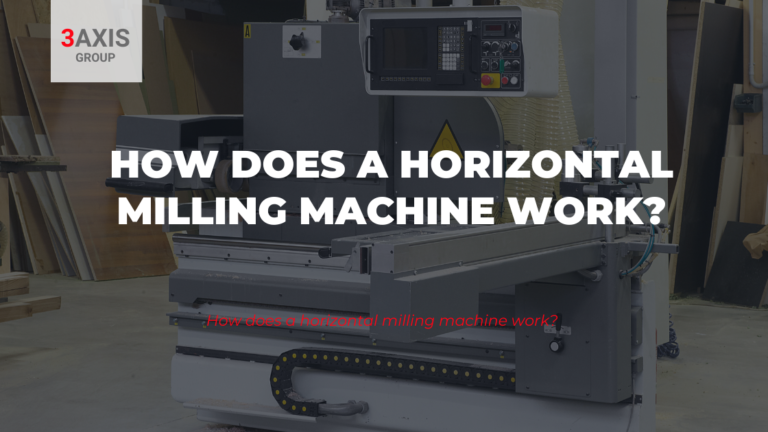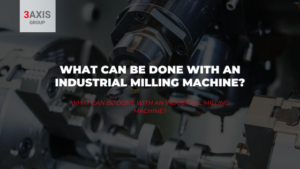Have you heard about horizontal milling machines? If the answer is no, find out what it is and how does a horizontal milling machine work in this post. Don’t miss it!
Although there are horizontal and vertical CNC milling machines, in this post we will focus on the horizontal type. As the name suggest, the horizontal milling machines have horizontally oriented tooling with rotating cylindrical cutters that can move along up to five axes to create
the shapes, slots, details, and holes of a three-dimensional part.
Both horizontal and vertical CNC milling machines are used by engineers and manufacturers to create very precise components. But if you’re considering incorporating a horizontal CNC milling machine into your project, here are some key advantages over its vertical counterpart.
1. Precision
Horizontal milling machines can work at numerous angles on the workpiece. In addition, 4- and 5-axis machines use spindles simultaneously at different angles, creating complex parts in fewer cycles.
2. Processing Time
Processes are faster on horizontal milling machines thanks to more efficient feeding and simultaneous cutting on multiple axes. However, CNC machines were created to be able to produce larger volumes with little or no interruption.
In short, horizontal CNC mills operate at a much higher production rate and create parts with smoother finish. As we will see below, they’re ideal for industries that require parts made form heavy materials and require machining on multiple sides.
What is a Horizontal Milling Machine?
CNC milling machines are an essential part of the machining sector where high precision is required to produce parts with exact size and dimensions.
Thanks to the development of these machines, it has been possible to create new milling options and increase the quality of each operation performed.
A CNC milling machine can controlthe simultaneous movement of 3 or more axes by means of electronic signals regulated and coordinated by a numerical control software. Once programmed, it executes them sequentially and automatically producing the machining of the part under the supervision of the operator, who doesn’t need to intervene in the
machining process.
But how does a CNC horizontal milling machine work? A milling machine is a machine that roughs, cuts or drills different solid materials, usually metal. This is done through chip removal by means of the high-speed rotation of the milling cutter and the movement of the shafts.
And the horizontal milling machine has the particularity that it uses cylindrical milling cutters that are mounted on a horizontal shaft driven by the machine head and supported at one end on the head and at the other end on a bearing located on the sliding bridge.
How does a horizontal milling machine?
CNC milling machines are assembled as both horizontal and vertical and can create precision components from metals among many other materials. Horizontal machining is particularly effective for heavy parts, as well as those that need to be worked on multiple sides.
CNC milling is especially valuable to the production of large parts that demand significant floor space, such as aircraft and aerospace panels or components. It’s also a good choice for projects in industries such as:
• Industrial equipment
• Building and maintenance
• Electronics
• Medicine
• Automotive
As we have seen throughout this post, there are many similarities between horizontal and vertical milling machine. However, horizontal milling machines cost more than their vertical counterpart, they make up for it by having better time and production efficiency in the long run.
If you are thinking of improving your productivity and growing your business, don’t miss out our selection of horizontal milling machines. Available at our Marketplace!
Discover also:




